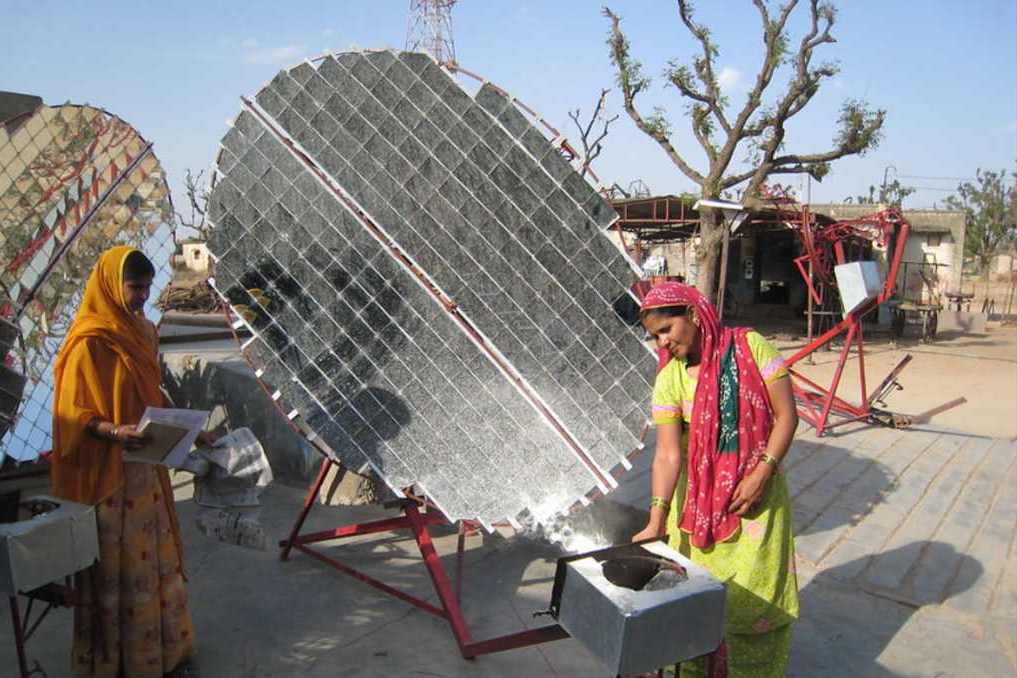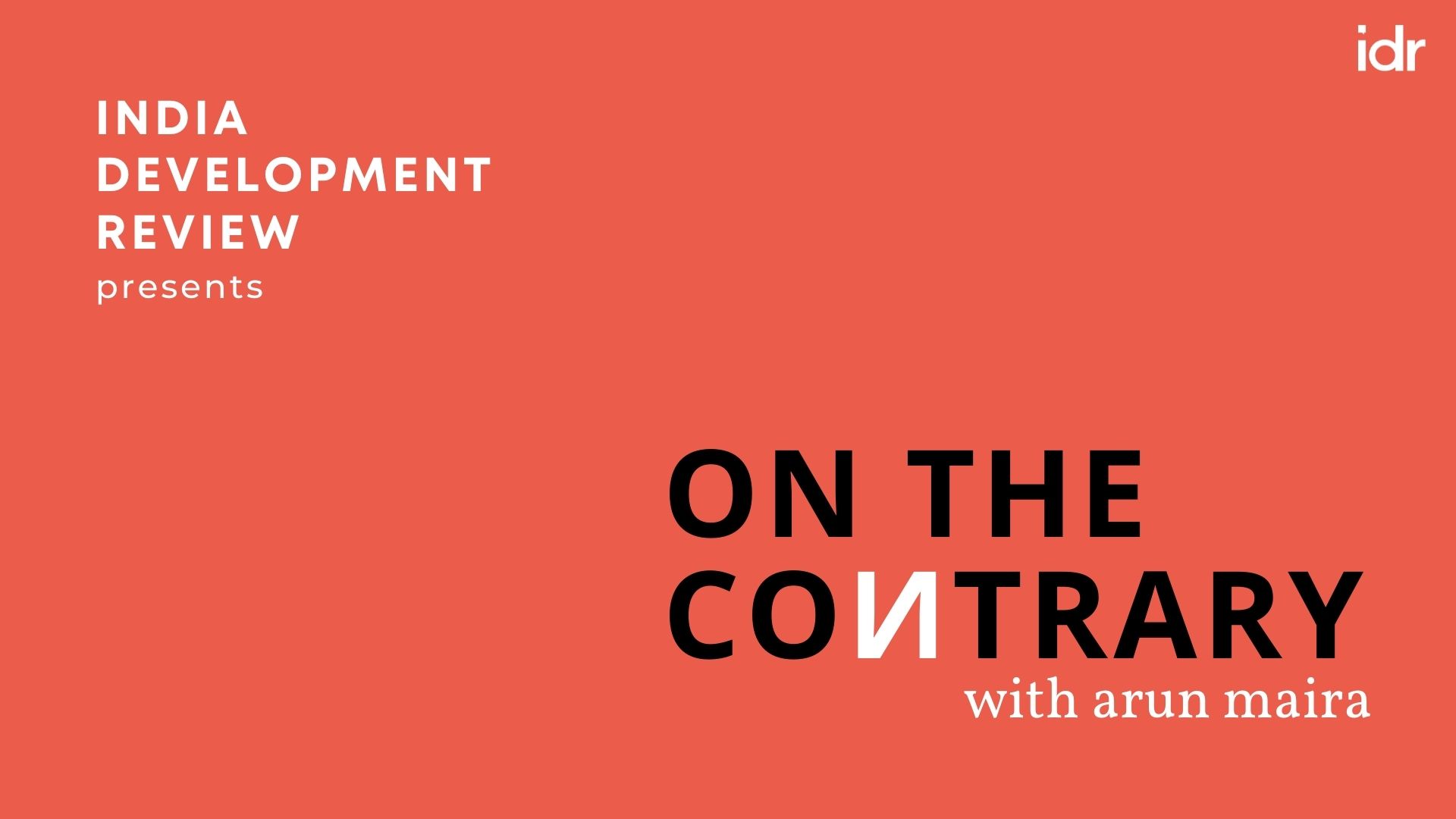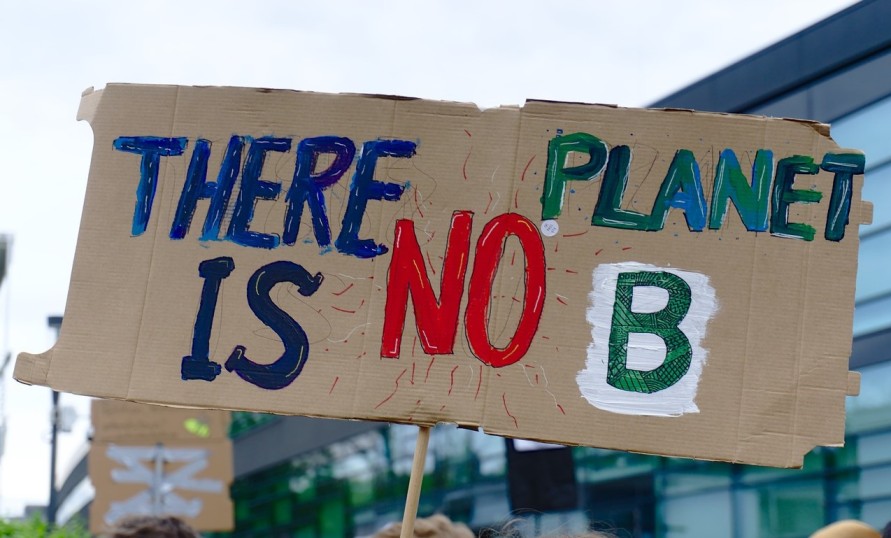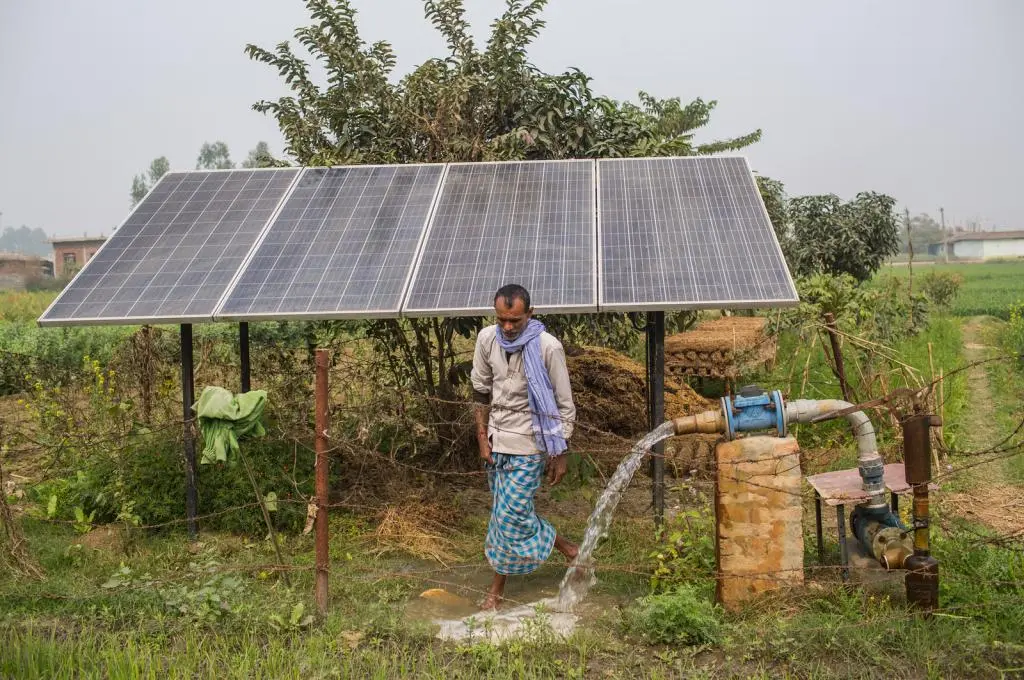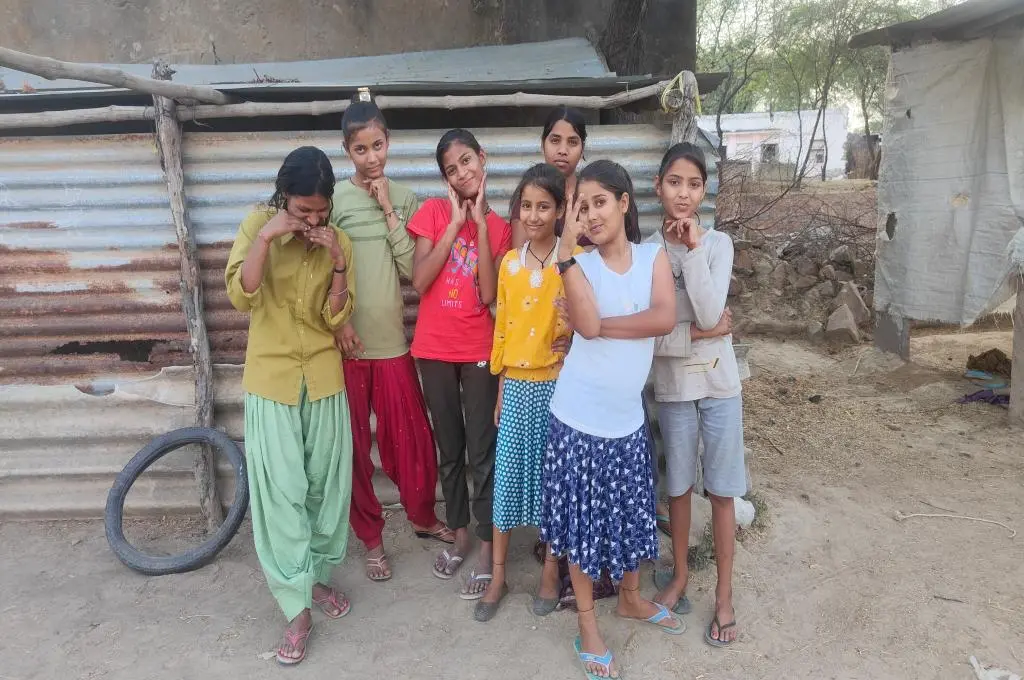Edited transcript of the episode:
0.53
Shreya: These protest chants were from a climate march around Mumbai’s Dadar area. This march was part of a global climate strike spearheaded by FridaysForFuture, a youth-led movement started by climate activist Greta Thunberg. As part of the strike, people from more than 100 countries took to the streets to raise awareness about the crisis.
There has been a surge of climate protests over the past couple of years. From blocking roads and airport runways and targeting artworks to filing lawsuits against governments for their failure in curbing carbon emissions, people are rising up and they are demanding change, demanding action, and demanding their right to a safe planet.
But as climate protests gain momentum, it’s important to question if they’re really benefiting the cause, and whether they’re influencing how climate action shapes up in policy rooms.
Answering these questions and more in this episode of On the Contrary by IDR are three experts— Stalin Dayanand, Disha Ravi, and Mridula Vijairaghavan—who have been playing an active role in India’s fight against climate change.
Here’s Mridula, an environmental lawyer, on how success in any environmental movement is never black and white.
2.16
Mridula: It’s so rare and so hard to find success, even in the courtroom. And in those rare instances that you do, to [then] see court orders translate to action on the ground is incredibly hard. I’d like to draw your attention to an example here. The Kaleshwaram lift irrigation scheme was a large project planned in the state of Telangana. And what this project endeavoured to do was to lift 1,000 tmc [thousand million cubic feet] of water from the river Godavari. [It required] constructing a dam on the Godavari, lifting this water, pumping it up to the uplands of the state, and using this water for irrigation. So, it involved complex construction in several districts across the state. It was budgeted at approximately INR 1.25 lakh crore—a figure I can’t quite wrap my head around just yet. [And so] they began to execute this project without statutorily mandated clearances. These include the environmental clearance, the forest clearance, and wildlife clearances because this project would also submerge a wildlife sanctuary. This project also involved the displacement of approximately 34,000 farmers. And there were parallel proceedings going on at the high court in Hyderabad about the state circumventing the provisions of the Land Acquisition Act.
The case that I was involved in was an application before the National Green Tribunal. And our case was fairly simple: It basically said that you cannot start construction of such a large project without obtaining these clearances. And that it’s illegal.
My client…his name is Mohammed-Hayatud-Din and I have huge respect for him…he was a schoolteacher at a village in Siddipet [Telangana]. He [was] a maths teacher there. And he rallied his village to say that they [the government of Telangana] are taking away our cotton fields. [He told them] they’re taking down standing cotton crops. They’re bringing their earth movers into the village without finishing the land acquisition process. His school was burned down when he began to protest. And these are some of the most powerful visuals that still stay in my mind: the residents [of] this village would sit down peacefully in the middle of the road and say that your earth movers cannot come into our village because [this] project is being executed illegally and we’ve not been consulted. So how are you just taking away our lands? Now, you would expect them to lose steam over time. But these guys were just relentless. They were at it for years. What also stood out about the way in which they held their own was that they tried to engage in fact-based communication with the authorities. [They would tell them that you] don’t have the clearances that are required by law; [that] you [have] not followed procedure, and therefore you cannot displace us. And they were peaceful protesters; there was not one instance of violence incited by the protesters. [During this time] there were large human rights violations [by the authorities]. Their children would be detained at police stations throughout the day, which is illegal. If they detained the kids at the police station, the parents cannot be sitting on the road and protesting; they will have to go and try retrieving their kids. And that will create a window of time when the earth movers would get into the village. So, it was a very, very challenging time, I think.
It takes resilience and commitment to the cause.
[The result of the protest was] a stay on the construction of the project about eight months into filing the case. And we were over the moon about this development. But the next day, my client calls to tell me that the construction has not stopped; we still have earth movers coming into the village. And the residents of the village are still protesting. And they [the government] don’t give a damn about the stay. We’ve provided a copy of this stay order to the collector, but it’s made no difference whatsoever. So how these things translate on the ground is a very grey area. And I think that it takes resilience and commitment to the cause and to the belief that if you keep at it, maybe there will actually be some impact.
6.30
Shreya: Despite the collective efforts of people and the legal pathways available to them, the movement in Kaleshwaram did not yield the expected results. And this is precisely what makes sustaining a movement an uphill task—the fact that victory is not guaranteed.
Let’s look at the Aarey protests in Mumbai, for instance. They started in 2014 to prevent the felling of numerous trees in the Aarey colony for a Metro car shed construction by the Mumbai Metro Rail Corporation. And while the Save Aarey movement is largely considered to be a success, it has had its share of setbacks along the way. For instance, in October 2019, the high court dismissed four petitions that contested the felling of trees in the colony for the car shed. Shortly after the court’s decision, bulldozers were deployed and several protesters—including students who had been vehemently opposing the order—were arrested.
Stalin Dayanand, whom we spoke to in the context of Aarey, heads a nonprofit called Vanashakti, which has played a key role in this movement.
7.41
Stalin: This has been a roller-coaster ride as far as emotions go. It has been very tough [for] me and a lot of people who have been fighting this from the beginning. There were so many ups and downs, but somehow we managed to pick ourselves up and kept fighting. [But] on the night when the trees were being cut, we almost broke down. We said we put in eight years of fight, and it’s all going [to] vain. But there were law students from Noida who went to the chief justice’s house at night and said that what’s going on is absolutely preposterous and it needs to be stopped. The Supreme Court sat [down for a] hearing on this matter, an environment matter, on a Dussehra holiday. That again is a unique thing. And the court issued a stay order on cutting the trees, which stands even today.
The moment of celebration came when the 800 acres [of land] was declared as forest [land] and [when] the cases against the 29 arrested people were dropped. These came, of course, after two years of follow-up, but all’s well that ends well. Those students and those people who went to jail at least had their cases dropped, especially since it’s for a just public cause. [Of course] there are ups and downs. You know what happens in a movement—there are a lot of people, there will be friction, there will be difference of views, etc. But all said and done, when the moment comes, when the time comes, everyone is standing together. That’s the beauty of it too.
It’s a selfless movement. You will have bad examples here and there, but 90 percent of the Aarey movement is a success story. It’s a success of people who had clean hearts, who came together and fought it out.It’s a great achievement.
9.15
Shreya: Movements can be a tricky business. Like both Mridula and Stalin stated, there is no such thing as an absolute victory because success can come in many forms, and across different timelines. And along the way, there are often many losses. Still, there is both a symbolic and a very real power to climate protests. And given the long haul, activists across time have had to use various tools and resources to achieve the goals of the movement.
Increasingly, social media is becoming one of those tools that activists, especially young activists, leverage really well to raise awareness and galvanise support. When FridaysForFuture India gathered support to protest against the change in The Environmental Impact Assessment in 2020, they relied heavily on social media to get the word out. And it made all the difference.
Here’s Disha Ravi, founder of the India chapter of FridaysForFuture, on how it all came together.
10.13
Disha: This was right in the middle of lockdown. We couldn’t do anything physically. And this was new to us. We were not good at social media before that. We had to adjust to become good at it because that was the only option. Also, we thought [about it] and we had to use social media very creatively. And we did. And not just FridaysForFuture, it was a coalition of environmental movements around India. And for me personally, it was one of our best campaigns because it was fought on all sides—social media [as well as through] some on-ground actions that were done individually. And it was also [fought] legally where lawyers actually took it up. And there were loopholes that [the lawyers could identify]. [For instance,] they [the government] hadn’t converted it [the Environmental Impact Assessment] into different languages like they’re supposed to. They didn’t give enough time for the actual objection to be sent. And [the lawyers] did pick on all these objections and it was paused, and it is still paused, although they are making some of the amendments as single notices and passing it through the back door.
One thing social media taught us is that there’s no one form of activism.
But back then, it was huge. I believe, just in one night, 2 lakh people came to our website and sent e-mails to object, and that’s huge. And by the end of it, approximately 20 lakh people had objected to it not just from FridaysforFutures, [but also] like I said, from the coalition of environmental movements. And this was because we all collectively stood and explained to the public why this is bad. Because all of this was in legal language, it was also hard for us to understand. We had to get researchers and legal experts on board to explain to us, in layman’s terms, why this is bad. And we did the same on social media. And it got around 20 lakh people. I can’t even imagine 20 lakh people in person. That’d be huge. That’d be amazing. But yeah, it was one of the best campaigns we’ve ever done. And it only happened because all of us came together. One thing social media taught us is that there’s no one form of activism. It’s not just work on the ground. It can also be writing articles. It can be creating content on social media. It can be organising collective social media action like Twitter storms, things like that.
I think one of the big misconceptions is that online activism, even the social media storms, don’t take effort or time. But the truth is they do take effort and time. And while the interpersonal relationships are built better when you meet the person in real life, online still makes a huge impact. And yes, all actions that we take may not necessarily be ideal or lead to positive results.
Let’s consider a Twitter storm—it may not necessarily have the impact that you wanted to, but it still brings people together.
13.02
Shreya: Disha’s views are echoed by her contemporaries. Derrek from our team had a chance to catch up with some climate protestors at the march in Mumbai, and everyone he spoke with insisted that social media provides an important channel for any kind of activism. And that it is strengthened when married with offline strategies. Here’s what Vinita Rodrigues—an environmentalist working in the social sector—and Yash Agrawal—a professor of philosophy, logic, and critical thinking—had to say.
13.38
Vinita: Since we are living in the age of social media, it’s very easy to be present virtually. But it’s also important for us to be present physically, because I think when it comes to politicians or when it comes to anyone in a position of power, [that’s when] they know that they are accountable.
13.50
Yash: Protests are an important part along with other things such as social media that bring about change.
14.00
Shreya: Environmental protests aren’t new to India. There’s the Chipko Movement of 1973 where a group of peasants in a remote Himalayan village stopped loggers from felling a patch of trees. There’s also the Narmada Bachao Andolan that originated in the 1980s as a protest against the building of dams in the Narmada river. Time and again, people have come together and collectivised for their rights—their [right to], a safe and healthy environment.
14.29
Stalin: In the case of [the] Aarey movement, whether it was online or offline, citizens responded in equal measure. What was unique about the movement was that people from all walks of life came together. The movement was started by a group of homemakers or women—not all of them were homemakers, some of them are working women also—who came out on the ground and said [we need these] forests for our children. And they are the ones who started this battle. And from that, it went from strength to strength. Initially, it was defamed as being an English-speaking people’s movement. But gradually it really engulfed all of society—tribals, locals, labourers, rickshaw drivers even the dabbawalas (tiffin carriers), as well as doctors, engineers, film actors, everyone. Everyone was standing shoulder to shoulder; people came out with their families to protest on the ground.
15.32
Shreya: It’s clear that roping in people from different backgrounds and having a multifaceted approach increases the chances of success of a public movement.
15.40
Stalin: If you see, in the history of Mumbai, never has a public hearing for change of land—when land is taken away from no development to something else—[had this many protestors]. You will find 50 to 100 people objecting that, [and usually] it is a [residential] society which has a lot of members. But [in the case of the Aarey movement,] 4,500 people went to the town planning office. And that office has never seen 4,500 people in its entire existence. But people went there in person and told [them] not to destroy this place. There were 80,000 signatures which were sent in the first slot. Then the number went up to 3.5 lakh when it got more organised. And by ‘organised’ I mean that there were nonprofits that came forward and said that we will collect the signatures and we’ll collate it and send it. This shows the volume or the intensity of the fight or the number of people who join the fight. You can’t orchestrate these things.
It is the willingness of civil society to face off with the establishment and [be okay with] police cases against them, which makes a difference. That night when those 4,000 odd trees were cut off, they were being cut [because there] were two days in between, Saturday and Sunday, when the Supreme Court does not work [at full capacity]. And the government at that time knew very well that the citizens would get a stay order from the Supreme Court. And to prevent people from going to the Supreme Court or getting any kind of relief, an attempt was made at night to cut those trees. And then people stormed the site. This is something you don’t see in Mumbai. And people stopped the cutting on that night. And 29 people, which included college students, women, teenagers, got arrested and went to prison. So [it is] the courage shown by the people that drives the movement. It is an inspiring movement. People said that no matter what happens, we will go down in history as the people who were there to stop something which was wrong, and prevented it from happening.
17.56
Shreya: So, what else matters when it comes to having the authorities acknowledge and listen to people’s demands? Courage, of course. People coming together, of course. Are there are strategies that movements apply that serve the cause? Mridula tells us more.
18.10
Mridula: The first step always needs to be to try and engage peacefully and [to] write to the authorities. I believe very strongly in engaging just in facts, so you give them the facts on a platter, simplify it to the best possible extent. And I think there are instances when such representations are taken into consideration, especially by committees that recommend or do not recommend projects for clearances, etc.
Legal awareness is a piece that we need to work on some more.
Apart from this is strength in numbers. And so to have to rally the crowds and have more people engage and communicate clearly in a similar vein is very important. Other than this, if one wants to take legal action, of course, you need the help of legal advisers and lawyers.
On a side note, I think legal awareness is a piece that we need to work on some more. Because the minute that you’ve placed this demand within the boundaries of the law, it gives legitimacy to whatever you’re asking for.. So legal literacy, knowing how to engage in a dignified manner, and having very clear demands are important. Now to simply say, “Climate change is at our doorstep, you’re doing nothing about it, you need to get your act together, what are you doing?”, may not be as effective as saying “Hey, we don’t have climate legislation and we don’t have clarity on how we will adapt to climate change and it’s already at our door, so how we are going to do this?” Think of it as a negotiation. When you go in for a negotiation, you have in mind a sliding scale of [what] is the best-case scenario and then what may be acceptable to you. And basically, you need to have clarity on what it is that you want.
Let’s take the example of the Dibang Valley, where we had peaceful protests happening. We have to take a multi-pronged approach if we want environmental action. And so, protests were one critical piece of the puzzle. There were also a bunch of scientists who came together and studied the area to describe and quantify the damage that this project would have on the environment. And that had a huge impact on the way that the Forest Advisory Committee (FAC) perceived this application for clearance.
So as part of the forest clearance process, the application goes through. There’s a very clear process laid out under the Forest Conservation Act, and it is the FAC that recommends or does not recommend an application for grant to forest clearance. Subsequently, it’s the state government that grants the final clearance. But the FAC recommendations are a key piece because it is also the FAC that prescribes mitigation measures to minimise the environmental impacts of the project in that area or on that forest. You often hear of elephants or tigers getting mowed down on railway tracks that pass through forests. It is the FAC that prescribes to the railways that you need to move at 20 kilometres an hour when you’re passing through this forest patch. So then mitigation measures are an important piece in ensuring that we are truly developing sustainably.
I think looping in environmental lawyers and experts from different walks of life—you could be an illustrator and have a lot to contribute to a protest, you could be a software engineer, you could be a web developer—can contribute to the cause. Taking advantage of your strengths, I think, is a critical piece in leveraging the law and in how you eventually manage to achieve what you set out to achieve.
22.09
Shreya: Social movements are an integral part of India’s democratic fabric. They give us the space and platform to exercise our rights as citizens, while holding those in power accountable. But it’s also important to acknowledge that it’s a long race to the end line, one filled with numerous obstacles.
22.33
Mridula: I think that protests are an important piece, but I don’t think protests by themselves can influence policy. We also have to remember that policy, in an ideal world, should be driven by science. But I don’t believe that’s how it works. I think there’s so many other factors that influence it. And despite being a democracy, we are a state in which power is [with a] handful [of people]. And that makes it all the more important for you and I to voice our opinions about these larger projects.
22.57
Disha: Social change isn’t going to come out of one small social campaign or one protest that you have. It is going to be collective action from all sides and for a long period. It’s going to be a lot of protests, it’s going to be a lot of social media campaigns, it’s going to be a lot of art, a lot of articles and news by journalists, a lot of music, and a lot of different forms of activism coming together for a prolonged period of time. That is going to bring about change. It’s not going to be one thing, and it’s not going to be in a short span of time. And the sooner we realise that, and we start working in areas that are our strengths, the sooner we’ll be able to bring about social change.
And another thing that’s super important is understanding that no actions are perfect. No activism is perfect. And demanding perfectionism from activism is going to be the death of us. Because people are worried about saying the right things and doing the right things every single time. And in this age of social media, it feels like no one can be right because you get criticised every single time. And that can be daunting. And to me, the biggest takeaway is that the environmental and climate movement is really vast. And all of us are going to have a lot of actions, a lot of plans and ideas, and different forms of activism that we may not necessarily agree with, or even see as activism. But it is necessary for the movement to continue and to achieve justice.
And I think, as a larger movement, we need to give that space to be able to grow and make mistakes. Because that’s what movements are supposed to do. They’re supposed to hold you, while also holding you accountable.
An earlier version of this article incorrectly stated that Stalin Dayanand has been arrested on more than one occasion. This was corrected on 16 February 2024.
—
Read more
- India is trying to criminalise climate activism
- How is India tackling climate change
- What does it take to build an environmental movement
- Tracing The History Of Forest Rights Protests In India
- Can India’s Forest Rights Act deliver? Odisha state is trying to find out
- Is climate change an election issue in India?
- Preparing for a marathon, not a sprint
